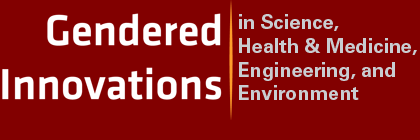Trainings for Applicants, Evaluators, and Staff
SG&DA is not yet consistently part of university curricula in the physical and life sciences, health and biomedicine, and engineering. Until universities step up to the task, funding agencies need to fill this gap.
Some funding agencies provide excellent training for applicants, evaluators, and agency staff. Some are in-person (or virtual) workshops with experts; some are dedicated websites, booklets, videos and other similar resources.
Professional societies and academies could support these efforts by integrating these topics into their licensing and professional development materials.
Many trainings can be shared internationally and/or translated into country languages. There is no need to create trainings where excellent are already available.
No interactive online trainings are available for engineering (e.g. mechanical, civil or electrical), computer science (e.g. natural language processing, computer vision or machine learning) marine science, or environmental sciences. But some good materials and case studies are available.
EC: Offered since 2013
DFG: some beginning materials for Humanities & Social Sciences, Engineering Sciences, Life Sciences, and Natural Sciences
NSERC: examples for the Natural Sciences and Engineering (available in English and French)
The following case studies are available from Gendered Innovations
Assistive Technologies for the Elderly
The following videos are available from the Technical University of Vienna
The most comprehensive open access interactive trainings to date are available for the biomedical and health fields.
Completion of the training modules is mandatory for some large, strategic funding competitions. CIRH also found that evaluators appreciated tailored training within their specific discipline.
CIHR: Sex and gender research and methods
CIHR: Institute for Gender Health videos and webinars
CIHR: Sex and gender analysis for peer reviewers
US NIH: After a multi-year consultancy with numerous experts, the US NIH released its four interactive courses:
US NIH: Bench to Bedside: Integrating Sex and Gender to Improve Human Health Course. Six modules on: immunology, cardiovascular disease, pulmonary disease,
neurology, endocrinology, mental health
ZonMw (Dutch Ministry of Health, Wellbeing, and Sports): ZonMw offers a prize for young researchers for creating a message for their peers. Some include games, for example: “A Genderful Research World”.
All STEM Fields
Engineering
Extended Virtual Reality
Facial Recognition
Gendering Social Robots
Haptic Technology
HIV Microbicides
Inclusive Crash Test Dummies
Human Thorax Model
Machine Learning
Machine Translation
Making Machines Talk
Video Games
Virtual Assistants
Energy for All
Mobility for All
Human & Computers
Robots in Our Society
Health and Biomedicine
• Integrating sex and gender into biomedical research
• Sex and gender in primary data collection with humans
• Sex and gender analysis of secondary data from human participants
• SABV and the Health of Women and Men
• SABV and Experimental Design
• SABV and Analyses
• SABV and Research Reporting



